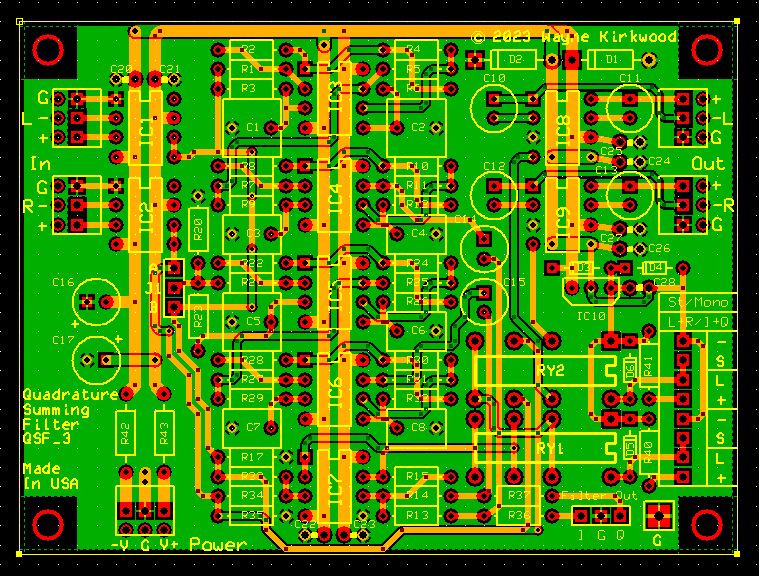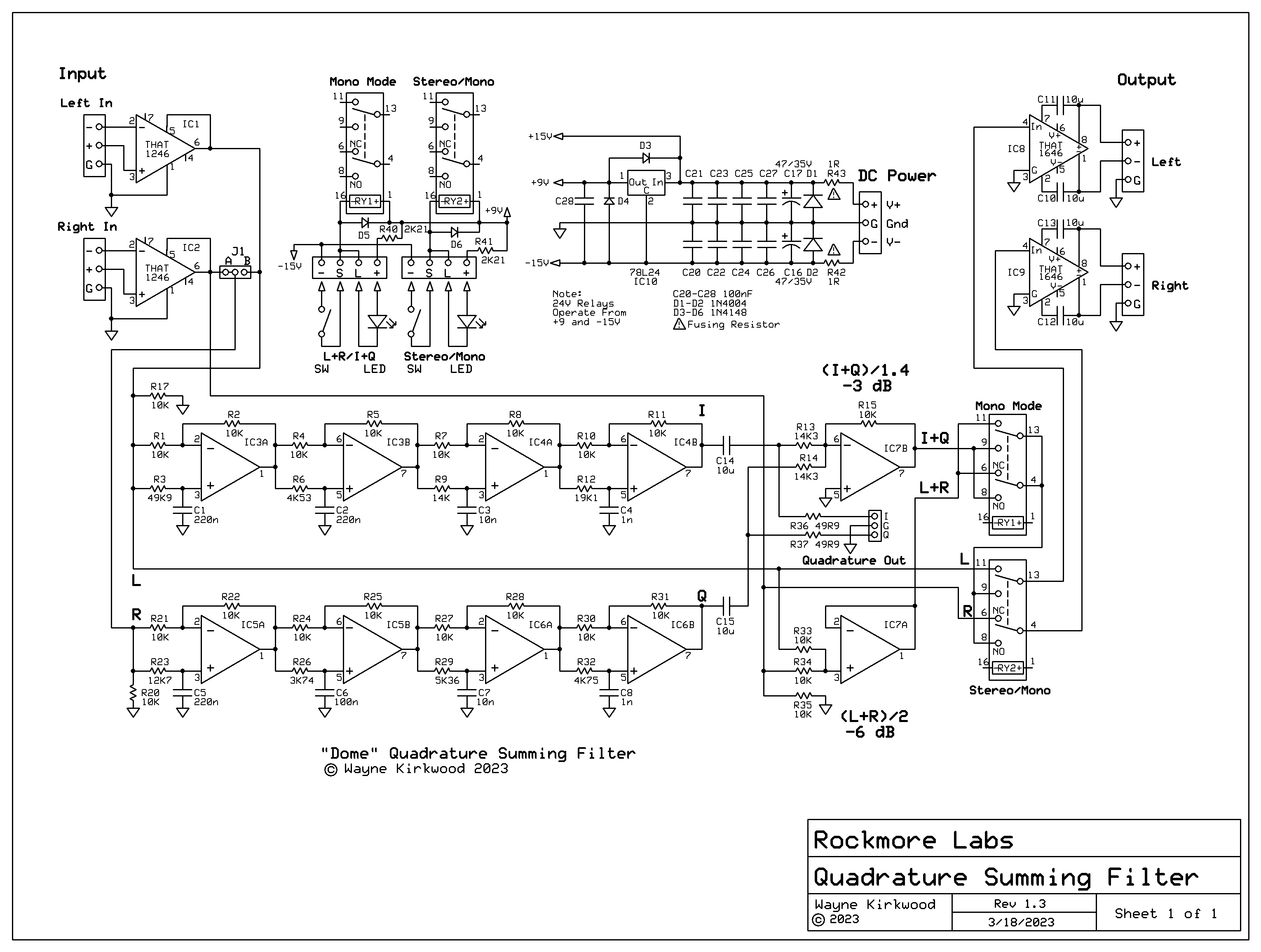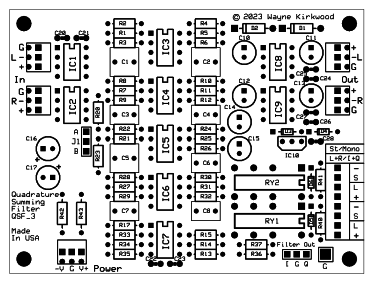Crest Factor changes using the Quadrature Summing Filter
I've been listening to a lot of different music "mono-ized" by the Quadrature Summing Filter and found that both the power and crest factor are affected depending upon what is in the L-R Side channel.
Two things I've found prior to this post:
1) Unless the source is mono or nearly-so to begin with the I+Q version always sounds more like the stereo version and better than the mono.
2) The I+Q version retains the signal power of the stereo version.
Some of previous tests were with stereo L-C-R hard-panned music from the pre-panpot era.
These elements showed a 0 to +3 dB increase in signal power because L-R has significant signal power and it gets folded back in.
As I was monitoring the 'scope in X-Y and comparing the peak levels of this particular song - Grace Potter and the Nocturnals "Runaway" - I saw huge changes in peak, but not average levels.
This is a fairly typical modern, wide, slightly clipped with a lot of transients in the Side channel.
The order in the following is stereo, L+R and I+Q.

The song was sampled over the entire length with the K-Meter's peak and RMS hold functions engaged.
You can see the RMS levels are about the same with mono just slightly less and I+Q almost exactly equal to stereo.
The peak levels however are greatly exaggerated in the I+Q version with the crest factor going from about 4 dB in stereo and L+R to over 9.5 dB with I+Q.
This suggests that the Side channel has very high crest factor and contains transient information which is lost completely when mono'd and also that Side has very little signal power.









